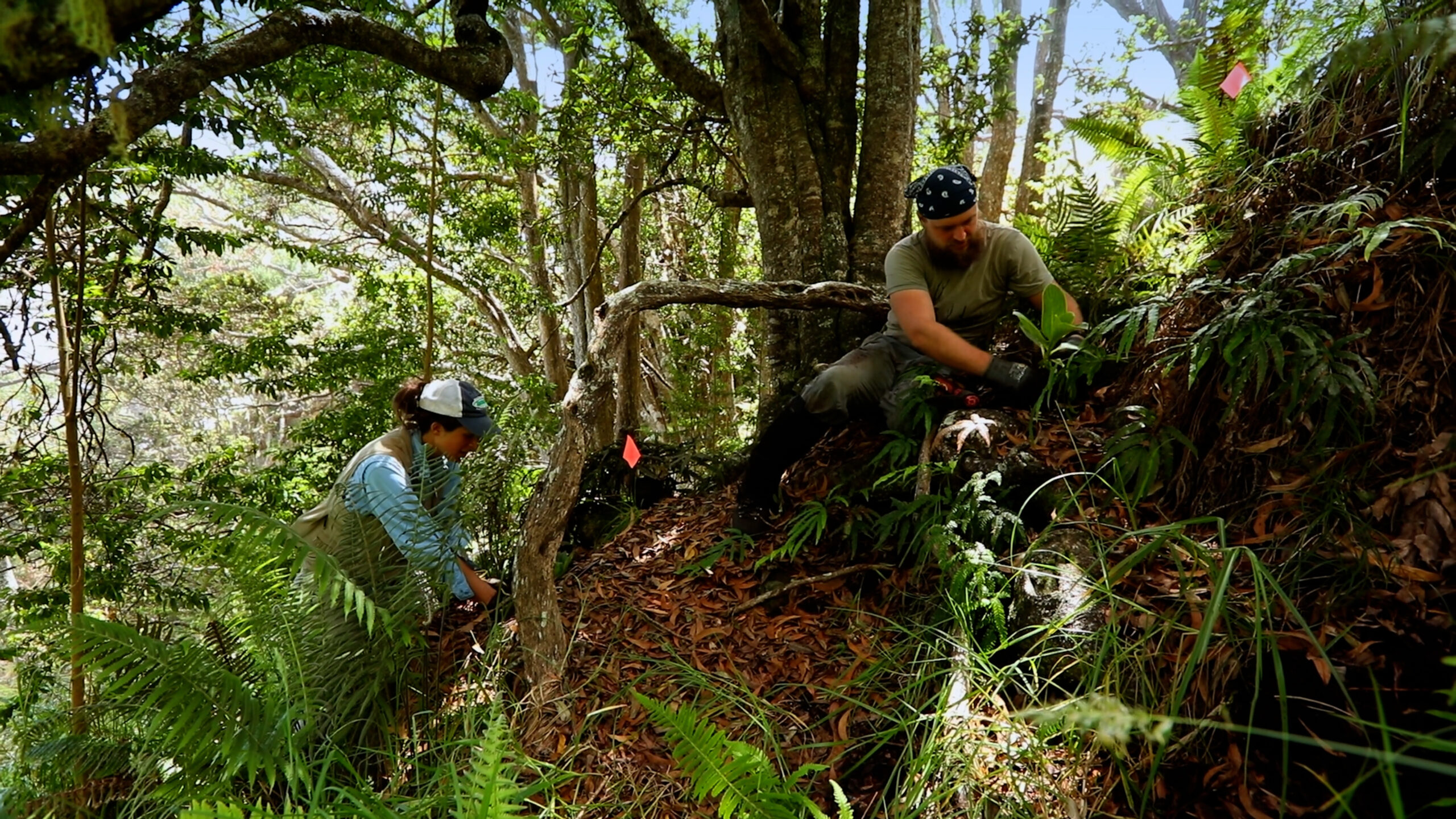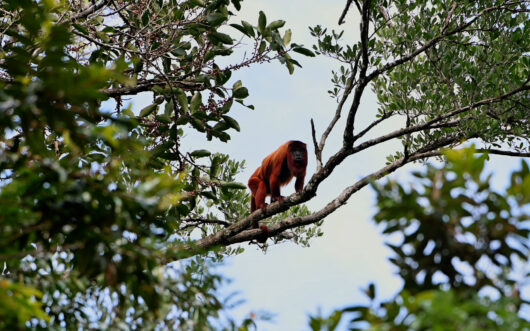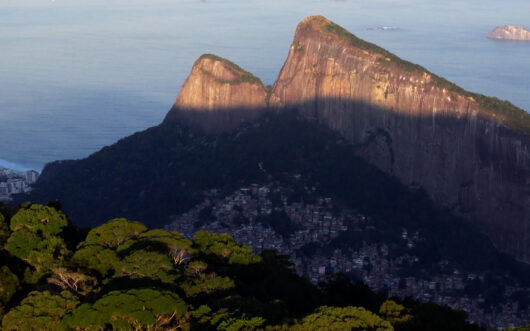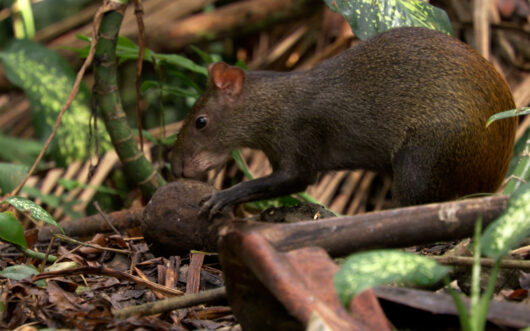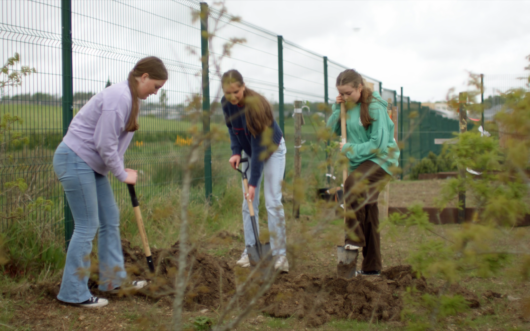Bring rewilding, rainforest biodiversity, and conservation science into your classroom.
Explore how conservationists in Brazil are reintroducing keystone species like agoutis, tortoises, and howler monkeys to restore seed dispersal and rainforest regeneration in Rio de Janeiro’s Tijuca National Park. This educator guide supports classroom discussion, NGSS-aligned learning, and hands-on opportunities for student engagement.
GRADES
9 – 12+
SUBJECTS
Biology, Storytelling, Ecology
Episode Overview
“Cada um desses animais é como se fosse uma pecinha num quebra-cabeça. Então, é por isso que é importante a gente perceber quem está faltando e trazer esses animais de volta para a floresta para que ela possa funcionar de uma forma inteira, completa, como era no passado.” (Portuguese) Alexandra Pires
“Each of these animals is like a piece in a puzzle. So that’s why it’s important to perceive what is missing and bring those animals back to the forest so it will be able to function in an entire, complete way, as it did in the past.”
In Rewilding Rio we meet conservation biologist Alexandra Pires from the Federal Rural University of Rio de Janeiro and ecologist and refaunation expert Fernando Fernandez from the Federal University of Rio de Janeiro. The two biologists and their team, Project Refauna, have launched a unique and hopeful effort to bring the red- rumped agouti (Dasyprocta leporina), the endangered yellow-footed tortoise (Chelonoidis denticulatus), and the vulnerable brown howler monkey (Alouatta guariba) back to Tijuca National Park, a Brazilian Atlantic Forest reserve within the city limits of Rio de Janeiro. As seed dispersers, the three species function as critical keystone species because their absence from the rainforest, and other seed dispersers like them, severely reduces the ability of fruit trees, like the threatened Brazil nut “agouti” tree (Bertholletia excelsa), to maintain their populations.
Focus Questions
- What does it mean for a species to be a keystone species and what are some examples of these species?
- What is the role of seed dispersers in an ecosystem?
- What are some of the major anthropogenic (human caused) threats to the Earth’s biodiversity and why?
- If some native species are now permanently extinct from a habitat, how can we still successfully restore their functions to those areas?
- How can the restoration and conservation of a few species lead to the conservation of additional species?
Key Concepts
- Threatened and Endangered Species: The International Union for the Conservation of Nature lists more than 44,000 species threatened with extinction. Habitat loss and destruction and agriculture are the major threats for more than 85% of these species.
- Biodiversity: Allowing large tracts of habitat like forests to be returned to a more natural state can help mitigate biodiversity threats, but we are learning that if previously lost animals and the ecological processes they influence are not included in restoration efforts, a habitat will not return to its full functional potential.
- Conservation biology: The practice of conservation biology recognizes the intrinsic value of the Earth’s natural diversity of organisms. Conservation biology works to understand how the natural world operates, how humans affect nature, and how we can use collective scientific and cultural knowledge to conserve Earth’s biological diversity.
- Defaunation: The loss of both species and populations of wildlife, as well as local declines in abundance of individuals is a human-caused process similar in its seriousness to deforestation. Deforestation is dramatic in its appearance and is more easily tracked and communicated to the public through compelling images of the magnitude, rapidity, and extent of forest loss. However, defaunation is more of a largely invisible phenomenon because it can occur even in large protected habitats which makes it difficult to quantify without intensive surveys.
- Refaunation: To reverse defaunation and its disruption of critical ecological processes native fauna must be reintroduced to areas where they have been previously extirpated. Refaunation has the potential to restore plant-animal interactions which can improve plant diversity and through seed dispersal mechanisms restore the age class structure within a plant species like large fruit-bearing trees.
- Rewilding: A primary goal of some ecological restoration projects is to go beyond conventionalrestoration, where some level of management is required to maintain ecosystem processes, and emphasize the importance of truly wild ecosystems by embracing their unpredictable and dynamic abiotic (e.g. droughts and floods) and biotic (e.g. food webs and population cycles) natural processes.
- Keystone species: Together, red-rumped agoutis, yellow-footed tortoises, and brown howler monkeys are keystone species because they function as essential seed dispersers of large fruit-bearing trees like the threatened Brazil nut tree.
- Seed dispersal: Seed dispersal is the process by which plants use wind, ejection, water, gravity, and animals to move their seeds far away from the parent plant. Various biodiversity threats including habitat fragmentation, overharvesting, biological invasions, and climate change interact negatively with a plant’s ability to disperse seeds. In Rewilding Rio we learn that the local extinction of three major seed dispersing animals, the agouti, the yellow-footed tortoise, and the brown howler monkey has disrupted the ability of the large fruiting trees of the Atlantic coast of South America to disperse their seeds and maintain their populations.
Curriculum Connections
NGSS
- HS-LS2 Ecosystems: Interactions, Energy, and Dynamics
- LS2.A: Interdependent Relationships in Ecosystems
- LS2.B. Cycles of Matter and Energy Transfer in Ecosystems
- LS2.C: Ecosystem Dynamics, Functioning, and Resilience
- LS2.D: Social Interactions and Group Behavior
- LS4.D: Biodiversity and Humans
- HS-LS4 Biological Evolution: Unity and Diversity
- LS4.C: Adaptation
- ETS1.B: Developing Possible Solutions
For complete list of curriculum connections including AP & IB standards, refer to full PDF.
